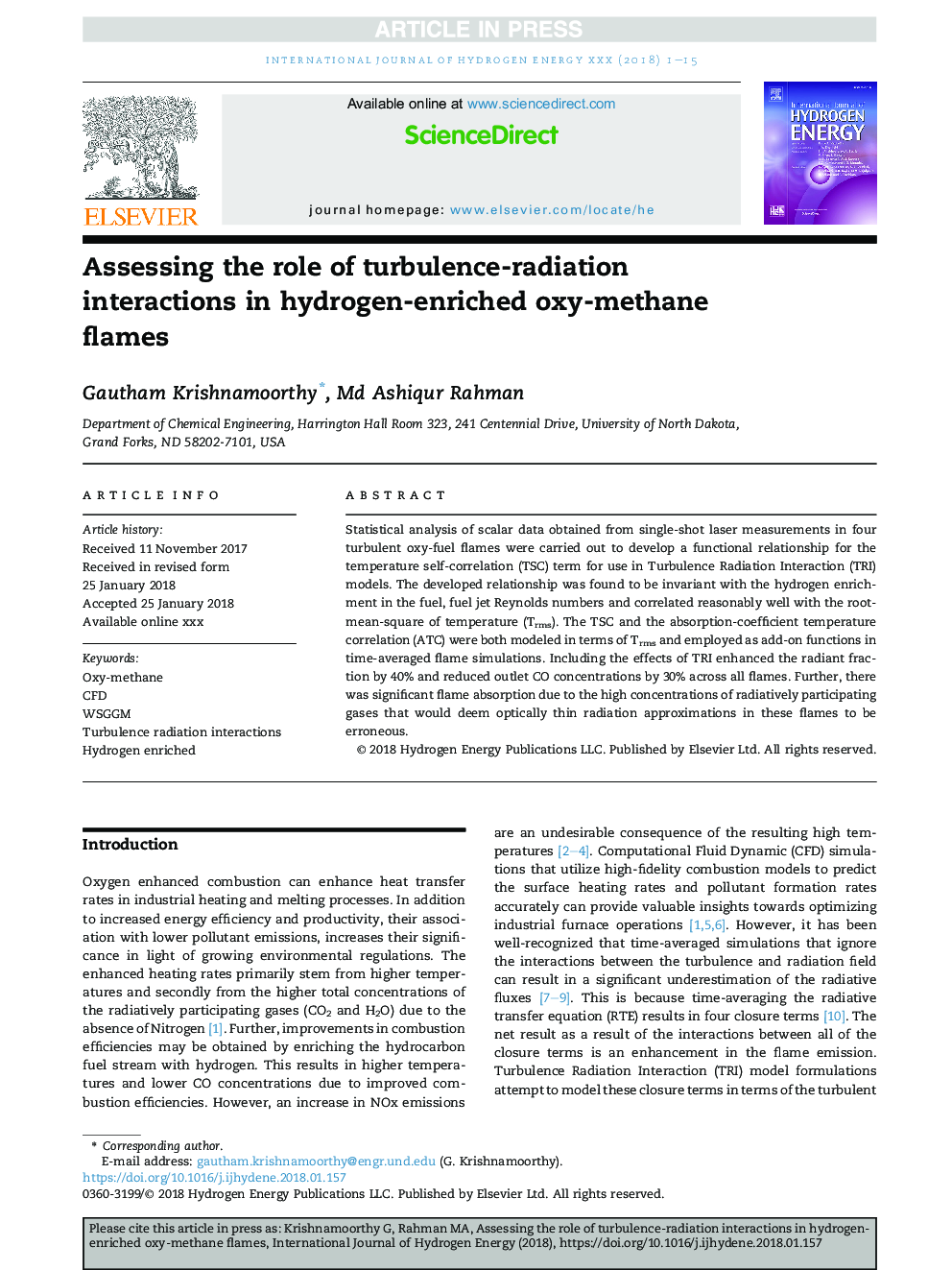| Article ID | Journal | Published Year | Pages | File Type |
|---|---|---|---|---|
| 7707090 | International Journal of Hydrogen Energy | 2018 | 15 Pages |
Abstract
Statistical analysis of scalar data obtained from single-shot laser measurements in four turbulent oxy-fuel flames were carried out to develop a functional relationship for the temperature self-correlation (TSC) term for use in Turbulence Radiation Interaction (TRI) models. The developed relationship was found to be invariant with the hydrogen enrichment in the fuel, fuel jet Reynolds numbers and correlated reasonably well with the root-mean-square of temperature (Trms). The TSC and the absorption-coefficient temperature correlation (ATC) were both modeled in terms of Trms and employed as add-on functions in time-averaged flame simulations. Including the effects of TRI enhanced the radiant fraction by 40% and reduced outlet CO concentrations by 30% across all flames. Further, there was significant flame absorption due to the high concentrations of radiatively participating gases that would deem optically thin radiation approximations in these flames to be erroneous.
Keywords
Related Topics
Physical Sciences and Engineering
Chemistry
Electrochemistry
Authors
Gautham Krishnamoorthy, Md Ashiqur Rahman,
